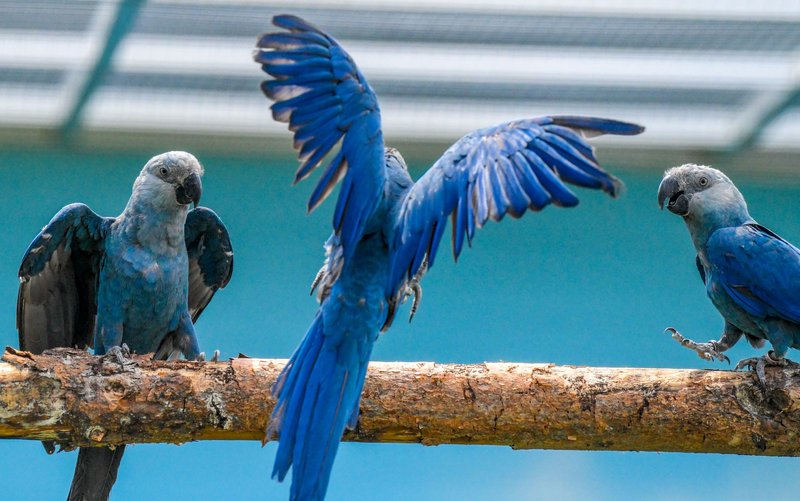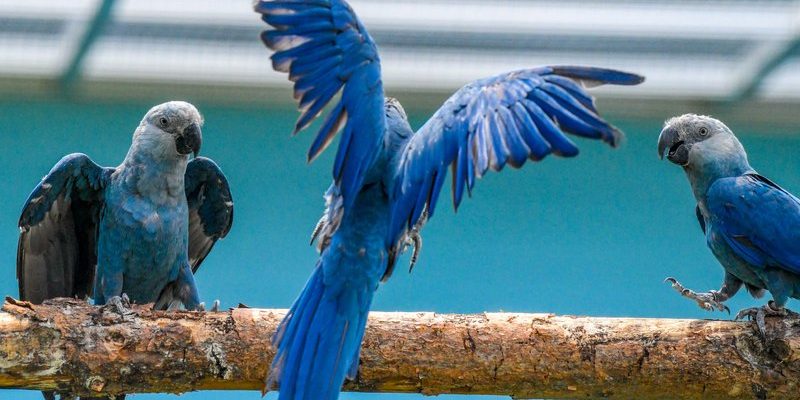
Conservation isn’t just about saving a species; it’s a comprehensive plan involving communities, governments, and organizations. Think of it like a team sport. Everyone has a role to play, from local people who help protect forests to international wildlife agencies working to enforce laws against illegal trade. In this article, we’ll dive deeper into the ongoing efforts aimed at protecting macaws, how these initiatives work, and why they truly matter.
The Importance of Macaws in Ecosystems
Why should we care about macaws? Well, they’re not just pretty faces—they play crucial roles in their ecosystems. Macaws are seed dispersers, which means they help plants reproduce by spreading their seeds around as they eat. This process is essential for maintaining the health of forests and promoting biodiversity. Without macaws, certain tree species may struggle to thrive, impacting countless other species that rely on those trees.
Here’s the thing: the loss of one species can set off a chain reaction, affecting everything from insects to larger animals and even the climate. So, conserving macaws isn’t merely about saving a bird; it’s about preserving the intricate web of life they help support.
Habitat Loss: The Main Threat
One of the biggest challenges macaws face is habitat loss. Deforestation, primarily due to logging and agricultural expansion, is like pulling the rug out from under them. Imagine trying to build a home without any land to stand on. That’s how it feels for macaws when their forest homes disappear.
Most macaw species live in tropical rainforests, which are being destroyed at alarming rates around the world. Not only does this destruction impact the macaws directly by removing nesting sites and food sources, but it also disrupts the entire ecosystem. Reforestation efforts have become crucial in combating this issue, as they aim to restore areas that have been damaged.
Community Involvement in Conservation
Conservation isn’t just in the hands of scientists and organizations. Local communities play a vital role, often serving as the first line of defense against threats to macaws. When locals are educated about the importance of preserving their environment, they become advocates for conservation.
Think of it this way: if someone in your neighborhood started a community garden, you’d likely want to help out because you see its value. Similarly, when people understand how vital macaws are to their ecosystem, they’re more likely to protect them. Programs that provide economic incentives for sustainable practices can empower communities to take action.
Legal Protections and International Agreements
Conservation efforts also involve legal frameworks and international agreements. Various treaties, like the Convention on International Trade in Endangered Species (CITES), help regulate the trade of macaws and other wildlife. These laws are like the rules of a game—without them, it would be chaos.
CITES ensures that any trade involving macaws is legal and sustainable, which is crucial in preventing poaching and illegal trade. Moreover, many countries have their own laws that protect macaws’ habitats, making it illegal to harm or capture them without permits. It’s like creating a safety net that keeps them safe from harm.
Conservation Organizations Making a Difference
Multiple organizations are dedicated to the protection of macaws and have developed innovative strategies to combat threats. For example, the World Wildlife Fund (WWF) works on projects that restore habitats and educate locals about the importance of these birds.
Another organization, the Rainforest Alliance, collaborates with local farmers to promote sustainable agricultural practices. They also help create protected areas where macaws can thrive. Think of these organizations as coaches in the game of conservation; they guide efforts and ensure that everyone is working toward the same goal.
Education and Awareness Initiatives
Education is a powerful tool in conservation. Through various programs and outreach efforts, organizations are raising awareness about macaws and the challenges they face. Schools, community centers, and social media campaigns play critical roles in spreading the word.
You might be wondering, “What can I do?” Being aware of these initiatives is the first step. Participating in local conservation events, or even simply sharing information on social media can make a significant difference. Every little action adds up, like puzzle pieces coming together to form a bigger picture.
How You Can Help Protect Macaws
Lastly, let’s talk about what you can do, even if you’re not a conservation professional. Supporting conservation organizations, whether through donations or volunteering, goes a long way. Even small contributions can help fund activities that directly benefit macaws.
Additionally, being a responsible consumer means thinking about the products you buy. Avoiding products that contribute to deforestation, like certain palm oils or unsustainable wood products, helps protect the habitats of macaws. Choosing eco-friendly options is like giving a high-five to nature!
Preserving macaws isn’t just about saving a single species; it’s about nurturing the ecosystems they inhabit and ensuring a healthy planet for future generations. Through habitat restoration, community involvement, legal protections, and education, we can all contribute to these conservation efforts.
Let’s take a moment to appreciate the beauty and significance of macaws. Their vibrant colors and playful nature remind us of the richness of biodiversity on our planet. So, whether you’re an avid birdwatcher or just someone who enjoys nature, remember that your actions matter. Together, we can make a difference and protect these stunning birds for years to come.

